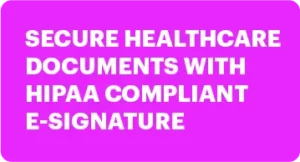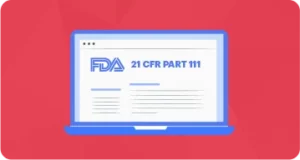Navigate 21 CFR Part 11 Compliance: The Ultimate Guide
Introduction
21 CFR Part 11 is a set of regulations created by the United States Food and Drug Administration (FDA) to ensure the security and integrity of electronic records, signatures, and regulatory submissions. It was created to protect companies and consumers from tampering or manipulation of these records and to maintain the accuracy and reliability of records used in health care and food safety. This guide provides an overview of 21 CFR Part 11, its significance, and the requirements for compliance.
Section 1: What is 21 CFR Part 11, Explaining How it Relates to Data Integrity (250 words).
21 CFR Part 11 is a regulation issued by the United States Food and Drug Administration (FDA) that sets requirements for the use and maintenance of electronic records and signatures. It was primarily established to ensure the accuracy and reliability of regulated data and to ensure the security and integrity of these records. All documents that are required to be maintained as per 21 CFR Part 11 must be accessible, accurate, verifiable, and secure.
The goal of 21 CFR Part 11 is to facilitate the secure use and storage of electronic records and signatures. It requires companies that are regulated by the FDA to ensure that all electronically stored data and documents are protected from unintended manipulation or manipulation intended to alter the record. Companies must establish secure methods for document storage, creation, and transmission, and must also create multiple levels of security so that access to records is limited to authorized users.
ection 2: Why 21 CFR Part 11 is Significant (150 words).
21 CFR Part 11 is significant because it sets standards that protect regulated industries from data and record tampering, as well as from errors that can occur in the handling and transmission of records. It also ensures that all records used in FDA-regulated industries are reliable and secure.
By requiring companies to take certain steps to protect their electronic records, 21 CFR Part 11 helps to ensure the accuracy and integrity of data used by permissible entities. These entities include healthcare professionals, pharmaceutical companies, food manufacturers, drug manufacturers, and many other industries that are subject to regulations from the FDA.
In addition, 21 CFR Part 11 helps to protect consumers by allowing consumers to trust the safety and efficacy of products that have been approved and regulated by the FDA. By ensuring that all electronically stored records are secure and tamper free, 21 CFR Part 11 helps to protect the public’s health.
What is 21 CFR Part 11?
21 CFR Part 11 is a document provided by the United States Food and Drug Administration (FDA) that sets forth standards for the electronic storage and maintenance of records, including detailed guidelines for safety and data integrity. Introduced in 1997, it is a widely used standard among the medical devices, biologics, and pharmaceutical industries. It is used to ensure that data collected during the design, testing or production of regulated products is reliable and trustworthy.
The purpose of 21 CFR Part 11 is to provide reasonable assurance that all electronic records are trustworthy, secure, and accurate, and that any changes to those records are made in a consistent manner. In other words, it requires organizations to implement technical, procedural, and administrative controls to ensure the quality, accuracy, and integrity of electronically created, stored, accessed and managed data.
21 CFR Part 11 creates a regulatory framework that ensures companies are able to produce reliable records and maintain traceability of records. It applies to both companies that create these records and the software used to store and access them. It also covers any electronic signature used to authenticate digital records.
Why 21 CFR Part 11 is Significant
21 CFR Part 11 is an FDA regulation that relates to the use of electronic records and digital signatures in place of paper-based records for the regulated processes. This regulation is put into effect to ensure the integrity of the records so that if there is ever a dispute, there is evidence to back it up. 21 CFR Part 11 also provides additional security measures to protect confidential data. It is for this reason that 21 CFR Part 11 is so important.
Ensuring compliance with this regulation requires organizations to implement rigorous protocols and procedures for the management of all electronic records and digital signatures used in the process. Proper implementation of 21 CFR Part 11 also requires organizations to have audits conducted to evaluate their compliance with the regulation on an ongoing basis.
Organizations who fail to comply with the regulations outlined in 21 CFR Part 11 could face fines or other penalties from the FDA. In more severe cases, an organization could even have their products or services banned from entering the market. For this reason, it is essential for organizations to understand the importance of following the requirements outlined in 21 CFR Part 11.
Requirements for Compliance With 21 CFR Part 11
21 CFR Part 11 is a regulation that sets the standards for data integrity and electronic records that are used in drug production. It establishes the legal requirements that organizations must meet when creating, collecting, storing, maintaining and archiving electronic records and signatures. This regulation applies to all drugs marketed in the US, including biologics and prescription drugs.
In order for organizations to comply with 21 CFR Part 11, they must ensure that all electronic records that they collect, store or use must meet four major criteria: accuracy, authenticity, reliability and integrity.
Accuracy means that the records must be accurate and reflect the original information. Authenticity means that records must be properly authenticated to ensure that they have not been altered. Reliability requires that electronic records must be available to authorized personnel whenever needed. Finally, integrity requires that records must remain unaltered and inaccessible to unauthorized personnel.
Organizations must also take certain security measures to protect their systems from unauthorized access, and ensure that the records are stored and maintained in a secure manner. This includes having procedures that allow for the authentication of users, control of access to records, and establishing a chain of command for data entry. Additionally, organizations must certify that their systems meet certain technical and operational requirements.
Explaining The Technical Controls of 21 CFR Part 11
Understanding the technical controls mandated by 21 CFR Part 11 can help organizations better comply with the regulations and achieve data integrity. The regulation describes the requirements of providing secure and reliable electronic records that can be trusted as accurate, complete, and unaltered. The technical controls are designed to ensure that data stored electronically remains compliant and trustworthy.
The technical controls are divided into four areas: access controls, audit trails, record retention, and authentication. Access controls determine who is able to access or modify electronic records and systems. Audit trails track changes made to individual records and documents in an electronic system. Record retention policies ensure that data is archived and stored in a manner that is accessible and recoverable if necessary. Lastly, authentication methods permit the verification of digital signatures and encryptions to protect data.
To meet the requirements set out in 21 CFR Part 11, all organizations must establish appropriate technical controls for their systems. Technical controls should include secure user access, data encryption, audit trails, and retention policies. Other important measures include implementing two-factor authentication, which requires two forms of credentials to access data. Furthermore, organizations should also create procedures that would enable them to quickly recover from unexpected system failures.
Implementation Guidance and Best Practices for 21 CFR Part 11 Compliance
21 CFR Part 11 is an important regulation set forth by the United States Food & Drug Administration (FDA) that requires companies to enact certain controls and procedures to ensure the integrity of data stored or transmitted electronically. It is one of the most widely used and respected standards for regulating the use of electronic information systems in the pharmaceutical, biotechnology, and medical device industries.
The framework of Part 11 requires organizations to implement specific technical and procedural controls that will help them protect the accuracy, reliability, and security of their records. This includes policies and procedures for system access control, audit trails, and document change control. Furthermore, organizations must also assure their digital signature compliance to protect the security and integrity of their data.
When it comes to implementation guidance, there are several best practices that companies should follow when complying with Part 11. Organizations should develop policies and procedures that accurately define their processes for maintaining and modifying computer systems, such as document change control and system backup/restore procedures. Additionally, they should set up a comprehensive system access control program to restrict access to systems and documents to authorized personnel only.
Organizations should also ensure the accuracy and effectiveness of their auditing by performing regular reviews and security tests across all its systems, as well as periodically conduct proficiency tests on personnel who handle and/or interact with sensitive data. Lastly, organizations should produce and retain detailed records of user access, audit trails, and change control actions.
6. Referencing the Role and Responsibilities of System Owners
System owners play an important role in meeting compliance with 21 CFR Part 11. They have the primary responsibility for determining where, when and how the systems must comply with the applicable regulations.
In addition, system owners are responsible for implementing the regulatory requirements into their business operations. This may include updating technical security features, developing policy and procedures, documenting processes, training employees, and auditing for compliance.
It is important for system owners to understand all of the roles and responsibilities that come with ownership, and to have a basic understanding of the regulations that govern their systems.
Auditing and Reporting for 21 CFR Part 11 Compliance
Auditing and reporting are an important part of maintaining compliance with 21 CFR Part 11. Regular auditing helps to ensure that data is accurately collected, securely stored, and readily available for review. In addition, the audit reports generated should be well-organized and detailed enough to provide an accurate assessment of the organization’s process and data integrity.
Data collection software must be configured to generate audit trails that allow for comprehensive tracking of user activity. These audit trails can help identify discrepancies and potential areas of non-compliance. The audit trail should include information such as user access times, operations performed on data, authentication failures, and changes to critical system parameters.
Organizations must also conduct periodic internal audits of 21 CFR Part 11 compliance. These audits should include reviews of all critical processes that involve the handling of electronic records and signatures. It is important to note that not all organizations will be required to follow the same auditing requirements. Therefore, it is important to consult your vendor or regulatory body to determine which specific regulations and standards apply to your organization.
In addition, you must have a plan in place for reporting any findings of non-compliance discovered during the internal auditing process. It is recommended that you prepare and submit monthly reports to the appropriate regulatory agency detailing the results of your audit process.
Proficiency Testing and Security Forms
In order to uphold the compliance of 21 CFR Part 11, organizations must ensure ongoing operational reliability of their electronic systems through proficiency testing. This process assesses the technical accuracy of the electronic system by testing it in a real-world environment. It is important to note that proficiency testing should be conducted regularly in order to ensure its accuracy continues to meet regulatory standards.
Organizations are also required to provide specific security forms, such as standard operating procedures, risk assessment forms, and user access authorization forms. These documents are required in order to provide clear guidance on the procedures for conducting operations as well as the security parameters in place for authorized users.
The security forms must also include all relevant information related to the system, such as the equipment details, the technical documentation, and facility design layout. All this information must be documented in order to ensure that the system meets the requirements set out in 21 CFR Part 11.
The purpose of this guide is to provide an overview of 21 CFR Part 11 and the regulations that relate to data integrity. It covers the significance of 21 CFR Part 11, its requirements for compliance, the technical controls for implementation, guidance on best practices, the role of system owners, details on auditing and reporting, proficiency testing, and specific security forms.
This guide is intended to provide a general explanation of 21 CFR Part 11, how compliance works and the steps necessary to achieve it. It is not intended to be an exhaustive reference for every regulation or requirement related to data integrity. Instead, it is designed to provide a high-level overview and give readers the foundational knowledge they need to begin the process of incorporating 21 CFR Part 11 into their processes.
In summary, 21 CFR Part 11 is an important component of data integrity that requires careful consideration, strict adherence, and clear documentation. This guide provides an overview of the topics associated with 21 CFR Part 11, giving readers an understanding of the concepts, steps, and guidelines necessary to comply with the legislation.
Adding references and additional resources to your 21 CFR Part 11 guide is a great way to ensure accuracy and reliability. With tiered safety regulations such as this, it is important to make sure that your research and sources are up to date.
The US Food and Drug Administration (FDA) offers comprehensive information on 21 CFR Part 11, including links to the regulation itself, interpretive guidelines, enforcement policies, public workshop transcripts, and other documents. Relevant documents can also be found at the Code of Federal Regulations website.
In addition to these official documents, software companies, training institutions, and compliance experts can offer valuable insights and guidance within the industry. They can provide helpful tips for implementing the regulations and advice on best practices. In addition, there are several online forums and discussion groups that can provide support for navigating the complexities of 21 CFR Part 11.
External resources should always be carefully evaluated and verified to ensure they reflect the most current version of the regulations. Lastly, referencing multiple sources helps to strengthen the reliability and accuracy of the guide, as well as increase its usefulness to readers.
Welcome to the Ultimate Guide to 21 CFR Part 11. This guide is designed to provide a comprehensive overview of the stringent United States regulations that ensure data integrity and security for companies handling electronic records in the food and drug industry.
Part 11 of Title 21 of the Code of Federal Regulations (21 CFR Part 11) is a set of requirements that encompasses assessments, procedures, and systems to ensure reliable and accurate electronic records. In this guide, we will discuss the purpose and scope of 21 CFR Part 11, its significance, requirements for compliance, technical controls, implementation guidance, best practices, and more.
Section 1: What is 21 CFR Part 11, Explaining How it Relates to Data Integrity (250 words).
21 CFR Part 11 was enacted by the United States Food and Drug Administration (FDA) as a regulation to ensure accuracy and reliability in the electronic recordkeeping process. It is meant to ensure data integrity and security, while also allowing the FDA to use electronic signatures in lieu of traditional paper-based signatures. The regulation applies to all businesses in the drug and food industry who must keep an electronic record of their work.
Under Part 11, all electronic records must be validated and verified before they can be accepted or deemed official. Records must also have the ability to be tracked and traced in order to maintain their validity and authenticity. In order to comply with the regulation, organizations must put in place sufficient security measures to protect the data stored in their systems from unauthorized access and malicious tampering.
In addition, organizations must audit and track changes made to records as well as document any nonconformities. Companies must also conduct and document periodic tests and reviews to ensure that 21 CFR Part 11 is being followed. Finally, organizations must also train users in the proper use of their systems so that they are able to make the most of these regulations.
FAQs about the Ultimate Guide to 21 CFR Part 11
1. What is 21 CFR Part 11?
21 CFR Part 11 is a set of regulations from the U.S. Food and Drug Administration (FDA) specifying the requirements for electronic records and electronic signatures for FDA record keeping requirements. It applies to all companies creating, storing or sharing regulated information.
2. Why is 21 CFR Part 11 significant?
Compliance with 21 CFR Part 11 is critical for companies in the food and health products industries as it ensures that electronic records cannot be tampered with and remain secure. It also provides confidence to the FDA and other regulatory bodies when they review records.
3. What are the requirements for 21 CFR Part 11 compliance?
The requirements for 21 CFR Part 11 compliance include ensuring secure authentication protocols, establishing audit trails, restricting access to electronically signed records, maintaining a secure system environment and having an effective training program in place.
4. What are the technical controls for 21 CFR Part 11?
The technical controls for 21 CFR Part 11 include components that must be taken into consideration when setting up a system for electronic records and signatures. These components include user authentication, encryption, message integrity and non-repudiation.
5. What kind of guidance should be implemented for 21 CFR Part 11 compliance?
Implementation guidance and best practices for 21 CFR Part 11 compliance depend on each individual organization’s needs but typically involve documenting processes, validating system processes, monitoring user activities, testing security protocols and regularly conducting audits.
6. What is the role and responsibilities of system owners?
System owners have a crucial role in 21 CFR Part 11 compliance. They are responsible for the security, accuracy and integrity of the electronic records and signatures. They must ensure that comprehensive and effective controls are in place in order to maintain compliance.
7. What are the details on auditing and reporting of 21 CFR Part 11 compliance?
Any changes to the system requirements must be investigated and reported to the relevant regulators. Audits should be conducted regularly to ensure that expected controls are in place and are being followed. Procedures should be documented and monitored on an ongoing basis.





